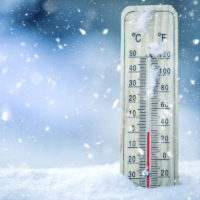Winter Tips for Homeowners – Including Sidewalk Maintenance Tips

The polar vortex may have moved back to the North Pole where it belongs, but only temporarily. The vortex expands every winter, and sends cold air, freezing temperatures and snow and ice across large sections of the United States, and every so often it sends a really strong message about just how cold it can get. How well did your home fare in the frigid January, and how well prepared are you for the next bout of below-freezing or subzero temperatures to hit your region? Here’s some Winter tips for homeowners.
Keep Your Pipes from Freezing
Disconnect your garden hoses, drain them and store them inside the garage. Use faucet covers over your outdoor faucets, and wrap any exposed pipes outside or under the house with insulation. Inside the house, open the cabinet doors under kitchen and bathroom sinks, and let your faucets drip. This should be done when temperatures are forecasted to drop below freezing for several hours. Find more information about staying safe, staying warm and protecting your property by checking out this article at the Today’s Homeowner website or other home improvement sites.
Insulate, Insulate, Insulate
Hopefully your house was well insulated when it was built, with fiberglass batt insulation in the exterior walls between the studs. If you have access to your attic, you can see for yourself how much insulation, if any, was laid down there. Here is one place where you can help your heating bills and fight off extreme cold. A fast, effective and cost-effective measure is to insulate the attic with blown-in fiberglass, cellulose or spray foam. Insulation blowers are expensive, but you can rent them relatively cheaply for the job from your home improvement store, and many stores will even loan you the machine for free if you buy a certain amount of insulation from them and can complete the job quickly.
Knowing your home’s R-value tells you how much insulation you need to meet local building codes; more northerly regions require higher R-values. You can layer insulation to increase your R-value. Of course, the more insulation you have, the warmer you’ll be. The Home Depot website has a series of articles and an instructional video on insulating your home according to the correct R-value.
Insulating your home is about more than just laying down insulation. Before the next freeze hits is a good time to check for gaps in windows, doors and vents that let the hot air out and cold air in. Seal drafts around windows and vents with spray foam. Drafts at the door can be managed with weather stripping and draft stoppers that you lay at the base of the door. These range from the cute and stylish to the utilitarian, and the Internet abounds with DYI draft stoppers you can manufacture from discarded clothing or just about anything cheaply and readily available at your local craft store.
Sidewalks Are Safer When Dry (Thank You, Captain Obvious)
Even though you may be staying indoors during the worst of winter weather, remember that others will still be out and may be accessing your driveway, porch and sidewalk. Think about your neighbors out walking their dogs, letter carriers delivering mail as well as employees of private package delivery services, and just the average person (both children and adults) on their way to the bus stop. An icy sidewalk or porch may expose you to civil liability if someone slips and falls on your property.
Although no one likes to shovel walks (this is one reason to have children), it may be necessary to keep your sidewalk and driveway safe. Laying down sand, gravel or kitty litter can help give traction to slippery surfaces. You can also include a product aptly named snow melt for both traction and deicing and to make your walk easier to shovel. Some find a combination of snow melt and rock salt most effective, although beware that salt may not be good for your soil and can even damage your concrete as well. You can find tips on deicing here, courtesy of Western National Insurance, as well as other tips on how to keep sidewalks clear and what to do if someone falls on your property.
Check the laws in your local jurisdiction or ask your insurance agent about your duties regarding the sidewalk that abuts your property. Laws vary according to the state and municipality. In some areas, you’re excused from shoveling the walk while a storm is in progress or during overnight hours, and in others you may be excused entirely, with the city taking responsibility. Whether the hazard was open and obvious also often impacts the extent of the homeowner’s liability for a slip and fall. Additionally, laws, courts and insurance companies may make a distinction between an icy walk formed from precipitation versus ice that forms because of your leaky pipe, sprinkler heard or garden hose. A local personal injury attorney who handles premises liability cases may be able to inform you about your duties regarding your property. They’ll certainly be the ones to let you know if someone is injured in a slip and fall on your property that should have been prevented.